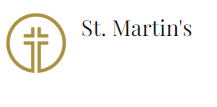Why Do We Veil the Cross and Statues During Lent?
The season of Lent was originally a season in which people who had been expelled from the congregation because of their notorious sins were given a chance to confess their sins, do penance, and be reconciled to the company of the faithful at the Easter Vigil. As the season evolved, it became a time when all Christians were asked to confess their sins, do penance, pray and do good works, and so recommit themselves to Christ and the Church in order to celebrate the joys of the Resurrection of Christ as fully reconciled children of God.
In the ninth century, it became customary to veil the High Altar during the season of Lent as a visual reminder of how our sins separate us from God. This custom continues in some places, but in most places the custom was modified and only crosses and statues were covered.
Veiled crosses and statues are a visual reminder of the penitential nature of Lent. When we enter the church and see the veils we instantly feel the unnaturalness of hiding these beautiful images which are meant to be a conduit through which we experience a glimpse of God’s beauty. This calls to mind the unnatural blindness that sin brings to us: Sin hides the beauty of God in the world and in our hearts. Sin places a pall over all of creation obscuring from our sight the true presence and glory of God that permeates our lives. We remove the veils at Easter as a reminder that only the grace of Christ’s resurrection and the liberating love of God can remove the veils that sin has placed over our hearts, heal our blindness, and reveal to us God’s presence in our lives- still, as St. Paul wrote, like looking through a cracked mirror- but in faith and hope when we will behold the beauty of God face to face, unveiled in resplendent glory.
Please note: we do not veil the Stations of the Cross. If you have crucifixes and statues in your home, you might consider veiling them during the season of Lent. It will call to mind the call to repentance, and fill your hearts with the anticipation of Easter.
